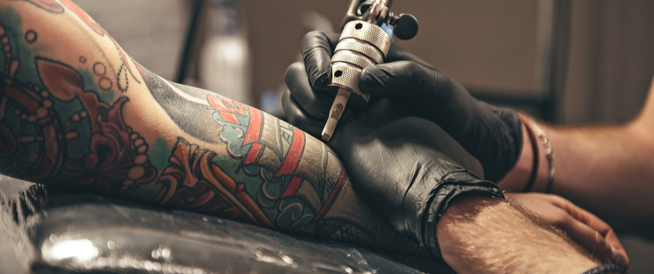Tattoo: Here is the most important information about it
Do you want to draw tattoos on your body? So think long before you do that, tattoos have a lot of damage. Follow the article for more.

Over the past few years, people have increased their interest in the topic of tattoos of different types and for various purposes, but before making the decision to draw a tattoo, especially the permanent one, you must know the most important information about it in the following:
Types of tattoos
There are several special types of tattoos, which differ according to their purpose, and they are
1. Permanent tattoos
Permanent tattoos are drawn by using a needle that inserts ink into the skin. This type of tattoo is permanent and lasts for life.
2. Temporary tattoos
Temporary tattoos are drawings prepared on coated paper, which are applied to the skin using water over it to stick to the skin.
Temporary tattoos usually last between 3-4 weeks, while adhesive temporary tattoos only last for several hours to several days.
3. Temporary tattoos (make-up)
This type of tattoo is used for makeup purposes, and the needle is used to insert colored ink into the skin in order to draw eyeliner, define lips, or draw eyebrows.
4. Henna
Henna is a type of plant used to dye and draw on the skin, and it has an orange color.
Henna was developed by adding some dyes to it to make it a black color that is more desirable to be applied to the body than the original henna color.
Risks of tattooing
Before deciding to get a tattoo, especially permanent, it is worth knowing the health risks associated with it, which include:
1. Getting infected
The use of unsterilized needles in tattooing may expose the body to the risk of various infections, and for this very reason the American Association of Blood Banks has prohibited accepting blood donations from those who have received a new tattoo for up to a year.
It should be noted that the place where the tattoo is drawn needs a lot of medical attention during the first week or so. To ensure that there is no possible infection, and this often does not happen, so infection increases among people who wear tattoos.
2. Exposure to tattoo removal problems
Deciding to remove the tattoo on the body requires a lot of effort and perseverance to do so, as this requires undergoing one of the following options:
- Undergo many laser sessions .
- exposure to promotion.
- Dermabrasion.
3. The occurrence of scars
Unfortunately, there are some types of tattoos that do not completely disappear and leave behind some scars, and the skin in the place of the tattoo does not return to its normal appearance after removing the tattoo, no matter how hard the person tries. Therefore, before making a decision to put a tattoo, one must be well aware that this will be present for life.
4. Exposure to allergies
Allergic reaction to tattoo pigment and its ink is rare, but it can happen and can be very annoying, due to the difficulty of removing and disposing of the ink.
Allergies may appear in the form of granuloma , which is an allergic reaction that results when a foreign substance, such as tattoo ink, enters the body.
It should be noted that this allergy may appear in the tattooed person a year after the tattoo.
5. Complications during MRI
Several cases have been recorded in the world in which the person who wears the tattoo suffered burns in the area or swelling after undergoing the MRI , but these cases are rare and there is no explanation for their occurrence so far, so it is worth telling the doctor if there is a tattoo on the body before undergoing the MRI.
Tips for minimizing tattoo complications
Here are the following tips that may help you in reducing the complications of tattooing on the body:
- Do not get tattooed while under the influence of alcohol.
- Get a tetanus shot before getting your tattoo if you haven't had a tetanus shot within the past 10 years.
- Choose the person who is competent and who uses sterile paws and clean tools, and there is no harm in asking him some questions about how he sterilizes these tools.
- Check the area before getting the tattoo and make sure it is clean.
- Choose dark colors for tattoos, such as: black, dark blue, and red, as they are easier to remove compared to light colors, such as: green and yellow.
- Stay away from using henna on the skin and skin, as the US Food and Drug Administration (FDA) prohibited the use of this henna except on the hair, as some types of it may cause burns and severe infections on the skin
